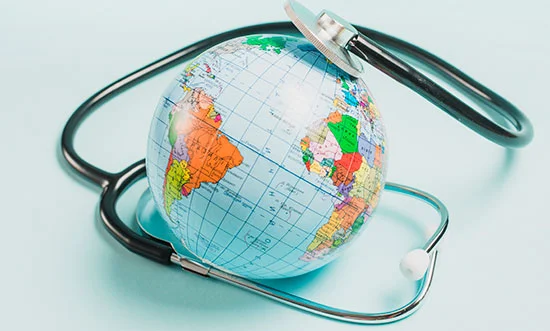Blitz Bureau
NEW DELHI: For years, patients travelling abroad for treatment assumed they had to choose between cost and quality. India has upended that assumption. With advanced hospitals, internationally trained doctors and treatments that cost a fraction of what they do in the West, the country has become one of the fastest growing medical tourism destinations in the world. Figures from the Bureau of Immigration highlight the scale of the boom. India received 183,000 medical tourists in 2020, 304,000 in 2021 and 475,000 in 2022. By 2023, the number had surged to 635,000. In the first four months of 2025, more than 131,000 visitors had already arrived for healthcare.
Range and cost
The range of procedures drawing patients is striking. India has established itself as a centre for advanced cardiac surgery, including bypasses and valve replacements. Orthopaedic patients come for hip and knee replacements, while others seek critical organ transplants such as liver, kidney and bone marrow. Specialist care in oncology, neurology and ophthalmology is increasingly popular, alongside fertility services like IVF, advanced dental work and cosmetic procedures.
Cost remains the most persuasive factor. A heart bypass operation that might cost between $70,000 and $150,000 in the United States can be performed in India for as little as $5,000 to $8,000. A knee replacement that commands up to $50,000 abroad is available here for $4,000 to $6,000. Across a wide range of procedures, patients save between 60 and 90 per cent.
Yet India’s attraction is not only price. Hospitals carry national and international accreditations such as NABH and JCI, ensuring standards that match the best in the world. Doctors are fluent in English and often trained overseas, while waiting times are far shorter than in Western health systems. Entry is also easier thanks to the e-Medical Visa, which now covers more than 167 countries.
Medical tourism is no longer confined to India’s metropolitan centres. While Hyderabad, Chennai, Kochi and Thiruvananthapuram remain established hubs, smaller cities such as Thrissur, Kollam and Thane are also beginning to attract international patients. Better infrastructure and specialist clusters, supported by telemedicine, are widening access and spreading economic benefits across regions.
The ripple effect of this trend is farreaching. Medicines are up to 90 per cent cheaper than in many global markets, while consultations cost only a fraction of Western rates. For chronic illnesses such as cancer or heart disease, which demand repeated interventions, the savings can be transformative. For NRIs already balancing mortgages, education fees and retirement plans, choosing India for treatment often makes the difference between financial strain and security.
‘Heal in India’
India’s medical tourism sector is currently valued at between $7 and $9 billion and is projected to exceed $13 billion in the near term. The Government’s ‘Heal in India’ initiative aims to integrate this growth with the country’s wider Viksit Bharat @ 2047 vision, ensuring that healthcare becomes both a domestic strength and a tool of international engagement. The medical tourism’s success in India is built on more than affordability. It rests on a combination of skilled professionals, accredited hospitals, global accessibility and the reassurance of consistent quality.



